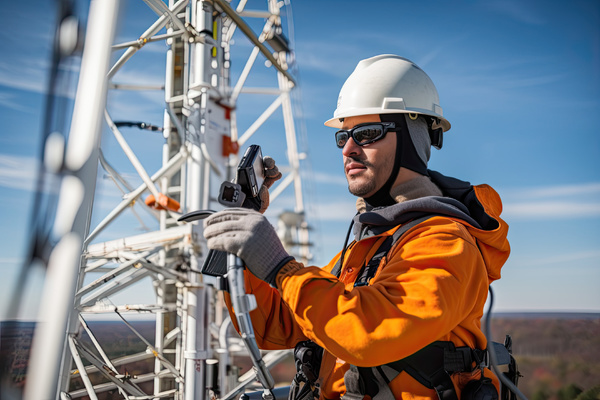Telecom providers are working through a pivotal time, as industry fundamentals are shifting with the emergence of 5G, cloud services, and a host of other new technologies to increase telecom growth.
To thrive amid this rapid change, telecom leaders must carefully consider how they collect, aggregate, enrich, and analyze data to drive well-informed decisions.
Telecom network planners must grapple with a broad set of questions involving peak demand, optimization and ROI, customer expectations, and regulatory compliance. Data analytics are the key to answering these questions with confidence and building a profitable, growing business, but so is location intelligence.

How Location Intelligence Drives Growth
Location intelligence plays a key role in telecom growth, driving growth in several ways. For example, location-based insights can be delivered through web GIS (geographic information systems) applications or data science models.
Together, these tools help telecom leaders answer three essential questions:
- Are you building in the right place? Where should you invest to maximize your return on your infrastructure dollars? If you deploy infrastructure in the wrong place and obstacles get in the way of your signal, you risk losing customers.
- Are you marketing and servicing the right people? How close is the match between your unique capabilities and the segments of the market that need those services? If you don’t understand your audience and how they use their devices, you again risk dissatisfied customers and lost subscribers.
- Are you delivering on your service promises? How can you optimize the network to minimize costs and increase data performance? Are you building a reputation for service excellence, or for spotty coverage?
Location intelligence enables telecom companies to gain a competitive advantage by exploring these three questions and answering them with confidence.
Location Intelligence Adds Context
Let’s consider an example of a network planning scenario for a multi-dwelling unit.
6721 East McDowell Road is identified as a business located at the geographical center of a property in Scottsdale, Arizona. That’s the address for Polynesian Paradise condos. The business associated with that address is the condominium association. If you’re assessing this location for network planning purposes, there is a lot more that you need to know about this community.
There are 24 buildings at this one primary address, with 136 property records and 186 secondary addresses, all of which are residential.
Without understanding the deeper context of this situation, you can’t even begin to make informed decisions about network planning for this area.
Read our Article
Telecom Data: Unlock Your Data Integrity Potential
Telecommunications providers have led the way in using spatial analytics for network planning and strategic decision-making. To generate meaningful business value, telecom companies must develop and sustain high levels of data integrity within their telecom data.
But location intelligence goes even further, providing you with detailed information about the people who live in the community. By learning more about the demographics of the population, including things like age and occupation, you can begin to understand how much bandwidth they’re likely to consume, on what days, and at what times. Location intelligence can also identify non-opportunities so they can be dismissed quickly. Storage facilities or mail centers, for example, might include multiple sub-addresses that are not serviceable addresses per se.
In the case of a multi-dwelling community like this, there may be opportunities to offer a suite of services or extend marketing to every home in the complex efficiently, dealing with a single point of contact via the condominium association.
This is all made possible thanks to location intelligence, which is key to enable telecom companies to identify serviceable addresses quickly and easily.

Reaching the Right Customers with the Right Messages
Telecom marketing teams want to maximize the return on their promotional spending. Naturally, it makes little sense to send mailings to non-serviceable addresses. Likewise, it’s wasteful to consume precious resources to offer business services to residential consumers, or vice-versa.
Location intelligence offers a great deal more than that kind of macro-level information. Enriched consumer data can shed light on the demographic makeup of a community, income levels, psychographics, lifestyle attributes, and more.
This level of detail can reveal information about major life events as well, identifying valuable opportunities to enroll new customers or upsell existing ones. Imagine, for example, that a family of existing subscribers has several children approaching college age. If those students plan on going out of state, that could prompt that customer to change to a new plan. It could be a new opportunity to reach out, retain that customer, and potentially even upsell them to new services.
Growing businesses, likewise, often represent attractive targets for upsell opportunities. Enriching your existing data with curated information from trusted sources can reveal segments of the market that comprise ripe opportunities for increasing telecom revenue.
Growing the Subscriber Base
Of course, the best form of marketing is service excellence. High levels of customer satisfaction naturally lead to lower attrition rates and a stronger reputation among consumers. Innovative telecom companies are using location intelligence to gain valuable insights into network performance, ensuring they can continue to meet expectations.
To answer the three fundamental questions outlined above, telecoms rely on business-friendly GIS to create a single view of the network that’s accessible, easily understood, and trusted by internal stakeholders to drive better, data-informed decisions.
They also need a strong foundation of data science to underpin those efforts. Many organizations get bogged down with data preparation, which can consume up to 80% of data science efforts. Collecting, organizing, and cleaning datasets consumes 45-60% of DS time. Considering the complexity and scale of the data needed to make effective decisions in the telecom industry, that number translates to significant costs, both in terms of dollars and lost opportunities.
Precisely offers a solution: location intelligence services that combine highly trusted data curated from the most reliable sources available, data management tools, and spatial analytics designed to maximize insights while increasing speed and agility.
Want to learn more about telecom growth, read out blog post Telecom Data: Unlock Your Data Integrity Potential







